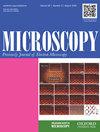Photobleaching reduction in modulated super-resolution microscopy
IF 1.8
4区 工程技术
引用次数: 1
Abstract
Important breakthroughs in far-field imaging techniques have been made since the first demonstrations of stimulated emission depletion (STED) microscopy. To date, the most straightforward and widespread deployment of STED microscopy has used continuous wave (CW) laser beams for both the excitation and depletion of fluorescence emission. A major drawback of the CW STED imaging technique has been photobleaching effects due to the high optical power needed in the depletion beam to reach sub-diffraction resolution. To overcome this hurdle, we have applied a synchronous detection approach based on modulating the excitation laser beam, while keeping the depletion beam at CW operation, and frequency filtering the collected signal with a lock-in amplifier to record solely the super-resolved fluorescence emission. We demonstrate here that such approach allows an important reduction in the optical power of both laser beams that leads to measurable decreases in photobleaching effects in STED microscopy. We report super-resolution images with relatively low powers for both the excitation and depletion beams. In addition, typical unwanted scattering effects and background signal generated from the depletion beam, which invariably arises from mismatches in refractive index in the material composing the sample, are largely reduced by using the modulated STED approach. The capability of acquiring super-resolution images with relatively low power is quite relevant for studying a variety of samples, but particularly important for biological species as exemplified in this work.调制超分辨率显微镜中的光漂白减少
自首次演示受激发射耗尽(STED)显微镜以来,远场成像技术取得了重要突破。迄今为止,STED显微镜最直接、最广泛的部署已经使用连续波(CW)激光束来激发和耗尽荧光发射。CW STED成像技术的一个主要缺点是由于耗尽光束中达到亚衍射分辨率所需的高光功率而产生的光漂白效应。为了克服这一障碍,我们应用了一种同步检测方法,该方法基于调制激发激光束,同时将耗尽光束保持在CW操作,并用锁定放大器对收集的信号进行频率滤波,以仅记录超分辨荧光发射。我们在这里证明,这种方法可以显著降低两个激光束的光功率,从而导致STED显微镜中的光漂白效应显著降低。我们报道了激发光束和耗尽光束都具有相对低功率的超分辨率图像。此外,通过使用调制STED方法,从耗尽光束产生的典型的不想要的散射效应和背景信号(其总是由组成样品的材料中的折射率失配引起)被大大减少。以相对较低的功率获取超分辨率图像的能力与研究各种样本非常相关,但对本工作中举例说明的生物物种尤其重要。
本文章由计算机程序翻译,如有差异,请以英文原文为准。
求助全文
约1分钟内获得全文
求助全文
来源期刊

Microscopy
工程技术-显微镜技术
自引率
11.10%
发文量
0
审稿时长
>12 weeks
期刊介绍:
Microscopy, previously Journal of Electron Microscopy, promotes research combined with any type of microscopy techniques, applied in life and material sciences. Microscopy is the official journal of the Japanese Society of Microscopy.
 求助内容:
求助内容: 应助结果提醒方式:
应助结果提醒方式:


